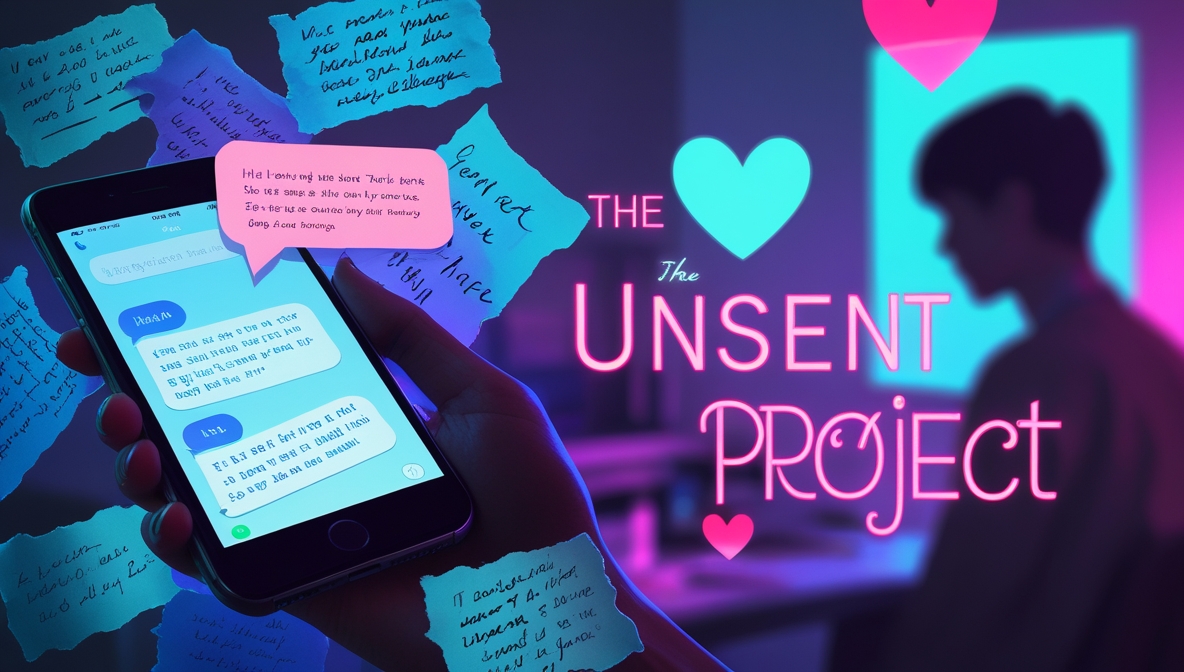Introduction
We’ve all written messages we never sent confessions left unsaid, apologies we never made, or love letters that stayed in drafts. The Unsent Project captures these unspoken thoughts and transforms them into an emotional archive for the world to see. Since its creation, it has collected millions of anonymous submissions, each paired with a color that represents the sender’s feelings. Together, they form a global tapestry of love, regret, longing, and healing.
In this article, we’ll explain what the Unsent Project is, how it works, why people participate, and the emotions it uncovers. We’ll also highlight its impact and answer the most common questions, making this your complete guide to one of the internet’s most powerful emotional experiments.
What Is the Unsent Project?
The Unsent Project is an online platform where people anonymously submit messages they never sent in real life. It was created in 2015 by artist Rora Blue as a way to explore how humans communicate unsaid feelings. Over the years, the project has grown into a global archive with millions of entries.
Each message begins with “To [Name]” and is displayed over a background color chosen by the sender. This color represents the emotion they associate with the recipient or the memory. While originally meant to explore first loves, the project now includes unsent words to exes, friends, parents, siblings, and even pets.
How the Unsent Project Works
1. Submission
Participants type their unsent message, often starting with “To [Name].” They select a background color to match their emotional tone. The message is then sent anonymously to the archive.
2. Moderation
Before publishing, messages are reviewed to ensure they are safe and free from harmful or abusive content.
3. Display & Browsing
Approved submissions appear in the public archive. Visitors can:
- Search by name or keyword
- Filter by colors to explore emotions visually
- Read through collections of messages that resonate with one another
Why People Participate
- Emotional Release – Writing out feelings can be therapeutic, even if the recipient never sees them.
- Connection – Readers realize others share the same emotions, which reduces loneliness.
- Creative Expression – Linking emotions to colors turns words into art.
- Anonymity – People feel freer to express raw, vulnerable truths without fear of judgment.
- Personal Reflection – Submissions become a way to mark important moments in one’s emotional journey.
Benefits and Risks
Benefits
- Offers a safe outlet for hidden feelings
- Builds empathy through shared stories
- Creates a colorful, artistic record of emotions
- Helps individuals process grief, heartbreak, or love
Risks
- Messages cannot be deleted or edited once published
- Personal information should be avoided to ensure safety
- Some content may feel emotionally heavy or triggering
- Misinterpretation of messages is possible without context
Common Themes in Messages
Browsing through the archive reveals recurring emotions that connect us all:
- Love and Longing: “I wish you knew how much you meant to me.”
- Regret and Apology: “I’m sorry I never said this when I had the chance.”
- Gratitude: “Thank you for being my safe place when I needed it most.”
- Closure: “This is goodbye, even if I never told you directly.”
- Memory and Nostalgia: “I still remember the sound of your laugh.”
Colors add another layer of meaning:
- Red often symbolizes passion or gratitude
- Blue reflects sadness, calm, or longing
- Black may signal grief or despair
- Green/Yellow can stand for growth, hope, or bittersweet moments
The Impact of the Unsent Project
The Unsent Project began as an art experiment but has become a cultural phenomenon. It has inspired school programs, mental health discussions, and art exhibits. The messages highlight how universal human emotions are, regardless of culture, age, or background.
For many, reading these submissions is both comforting and inspiring it shows that even unspoken feelings hold value and meaning. The archive is now recognized not just as art, but also as a collective diary of humanity’s hidden emotions.
Read Also: Enhancing Analytical Skills: 5 Practical Critical Thinking Exercises
Conclusion
The Unsent Project proves that words don’t have to be spoken to matter. It is a living archive of emotions people never had the courage or opportunity to express. Through anonymous submissions paired with colors, it captures the complexity of love, heartbreak, regret, and healing. Millions of people have found comfort, reflection, and connection in its messages.
While it cannot replace direct communication, the project creates a space where honesty and vulnerability thrive without judgment. For anyone who has ever typed out a message and hesitated before pressing “send,” the Unsent Project is a reminder that those words still carry weight even when they remain unsent.
By giving these hidden messages a place in the world, the project shows that silence can also speak volumes, and that unspoken feelings are just as real and meaningful as the ones we share aloud.
FAQs
1. What is the Unsent Project?
It’s an online archive where people anonymously post messages they never sent, paired with a color to reflect emotion.
2. Who created the Unsent Project?
The project was founded by artist Rora Blue in 2015.
3. Can I delete or edit a message once submitted?
No, once approved, messages are permanent in the archive.
4. Why do messages have different colors?
Each sender chooses a color that represents how they feel about the recipient.
5. Is the Unsent Project anonymous?
Yes, submissions don’t require personal details, but users are advised not to include identifying information.
